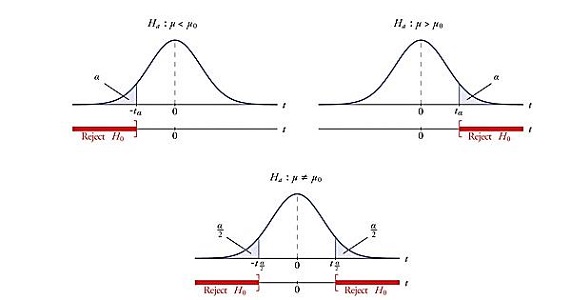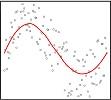Hypothesis testing is an integral topic in statistics and is conducted to test a population parameter or assertion for one or multiple samples. These hypotheses are generally based off of a theory or argument and tested using data collected from the samples.
The first step in hypothesis testing involves setting up the null and alternative hypotheses. The null hypothesis is written first and just as the name implies, this hypothesis claims that there is no difference or relationship between the observations being tested. Thus, the null hypothesis when written out numerically, always involves an equals (=) symbol.
The alternative hypothesis is written next and is the exact opposite of the null statement. Depending on the claim being tested, the alternative hypothesis can either propose a relationship in which one observation is greater than the other, less than the other, simply not equal to the other or a combination of those possibilities.
The alternative hypothesis is important for establishing whether the hypothesis test is characteristic of a left-tailed test, right-tailed test or 2-tailed test. The diagram below displays the probability density function for each type of test.

Figure 1. In this case, the claim is based from mean values. The null hypothesis is denoted by μ and the alternative hypothesis is represented by μo. The left hand corner diagram represents the left-tailed test, the figure in the middle is representative of the two-tailed test and the distribution curve on the right shows the claim for a right-tailed test. Please view the references for the image credit.
Once the hypotheses are constructed, the next step involves setting the criterion for testing, which essentially means the significance level. Generally the significance level is set at 5%, but it is not restricted to this value. The significance value is dependent on the situation being investigated. Note, that in a two-tailed test, this 5% significance level is shared by both tails, so each tail represents a significance level of 2.5%.
The final steps involve computing the test statistic and then making a decision on the claim. There are two decisions which can be made: the null hypothesis can either be rejected or a researcher can fail to reject it. This decision is based on the calculation of a p-value. If the p-value is less than or equal to 5%, the null hypothesis is rejected.
References:
Image Credit: Shafer, D.S. and Zhang, Z. (2014). Small Sample Tests for a Population Mean. Retrieved from: http://2012books.lardbucket.org/books/beginning-statistics/s12-04-small-sample-tests-for-a-popul.html
© BrainMass Inc. brainmass.com June 28, 2024, 3:34 pm ad1c9bdddf




